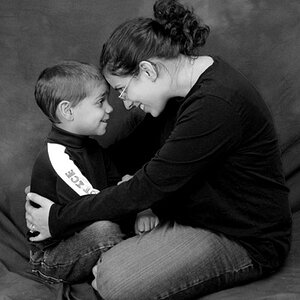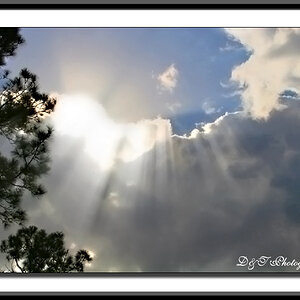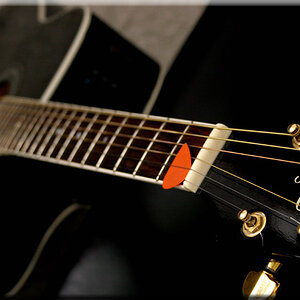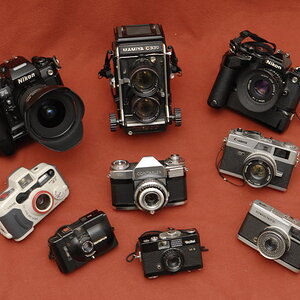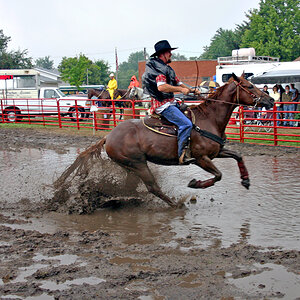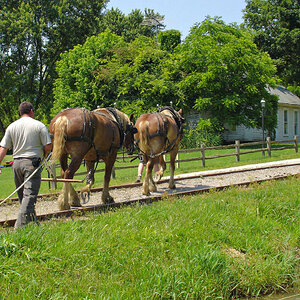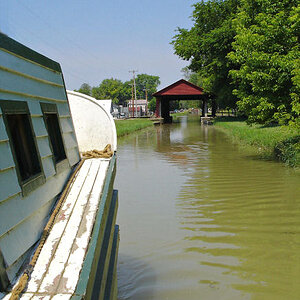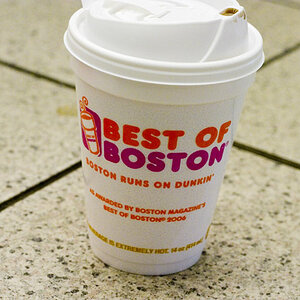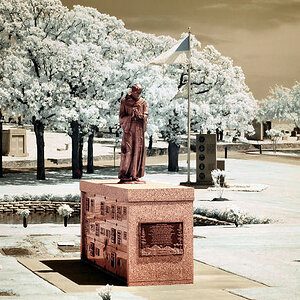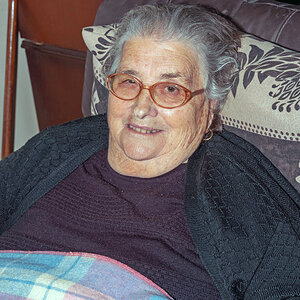Helen B
TPF Noob!
- Joined
- Sep 16, 2007
- Messages
- 3,296
- Reaction score
- 467
- Location
- Hell's Kitchen, New York
- Can others edit my Photos
- Photos NOT OK to edit
Here's a rough idea of what 'pushing' means when applied to colour negative film.
C-41 is a standardised process, with a standard development time. The development time can be increased to give more development - which can be called pushing. Just as there is a standard time for normal development there are standard times for push processing, and they are called 'push 1', 'push 2', 'push 3' etc. These are the nominal speed increases that can be expected in the midtones. This suggests that an ISO 800 film should be exposed at EI 1600 if it is given 'push 1' development.
Different films behave in different ways, however, and many of us prefer to use lower meter settings than the 'push' number would suggest when using colour negative film. For example, I don't bother with push 1 development of colour negative, and go straight to push 2, rating Fuji Pro 800Z at about EI 1600 and Portra 800 at about EI 2000. (I don't use either film at higher than the box speed without push development)
It's a different matter with colour reversal ('slide') film. That has a much lower dynamic range, and the optimum meter setting is likely to be close to the nominal push rating - ie if you use ISO 400 film with push 1 development it is probably best to set your meter to EI 800.
There may be a colour temperature issue. All currently available still colour negative film is balanced for daylight, and if you use it in tungsten light it will have to be corrected in post if a blue correction filter has not been used on the lens - these lose two stops of light.
If you have given barely adequate exposure and haven't used a blue filter you may have difficulty getting a good colour balance in the shadows. Fortunately at most gigs it isn't important for really accurate colour balance to be obtained in the shadows.
Colour negative film tends to be more grainy in the shadows, and the blue sensitive layer tends to be the grainiest layer. These two effects mean that daylight film exposed in tungsten light without a correction filter will have gritty blue shadows. You either learn to like it, give plenty of exposure (hence my lowering of EI from the nominal push rating by about one stop) or switch to another medium...
Best,
Helen
C-41 is a standardised process, with a standard development time. The development time can be increased to give more development - which can be called pushing. Just as there is a standard time for normal development there are standard times for push processing, and they are called 'push 1', 'push 2', 'push 3' etc. These are the nominal speed increases that can be expected in the midtones. This suggests that an ISO 800 film should be exposed at EI 1600 if it is given 'push 1' development.
Different films behave in different ways, however, and many of us prefer to use lower meter settings than the 'push' number would suggest when using colour negative film. For example, I don't bother with push 1 development of colour negative, and go straight to push 2, rating Fuji Pro 800Z at about EI 1600 and Portra 800 at about EI 2000. (I don't use either film at higher than the box speed without push development)
It's a different matter with colour reversal ('slide') film. That has a much lower dynamic range, and the optimum meter setting is likely to be close to the nominal push rating - ie if you use ISO 400 film with push 1 development it is probably best to set your meter to EI 800.
There may be a colour temperature issue. All currently available still colour negative film is balanced for daylight, and if you use it in tungsten light it will have to be corrected in post if a blue correction filter has not been used on the lens - these lose two stops of light.
If you have given barely adequate exposure and haven't used a blue filter you may have difficulty getting a good colour balance in the shadows. Fortunately at most gigs it isn't important for really accurate colour balance to be obtained in the shadows.
Colour negative film tends to be more grainy in the shadows, and the blue sensitive layer tends to be the grainiest layer. These two effects mean that daylight film exposed in tungsten light without a correction filter will have gritty blue shadows. You either learn to like it, give plenty of exposure (hence my lowering of EI from the nominal push rating by about one stop) or switch to another medium...
Best,
Helen
Last edited:


![[No title]](/data/xfmg/thumbnail/31/31039-558cdb3d311dc67b7a2134527e230488.jpg?1619734582)

